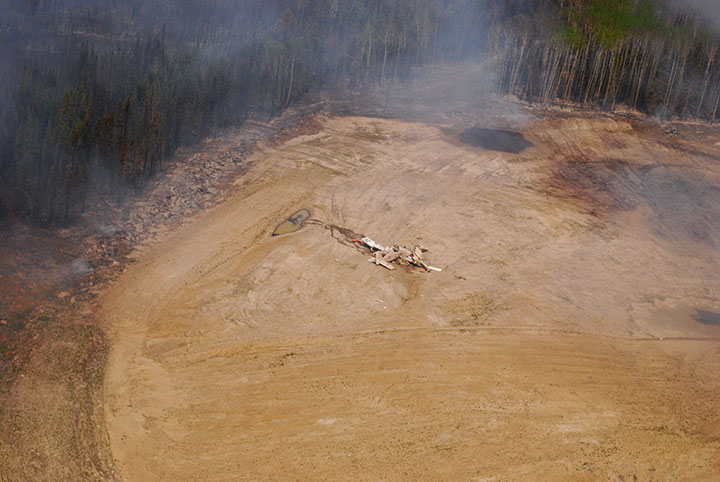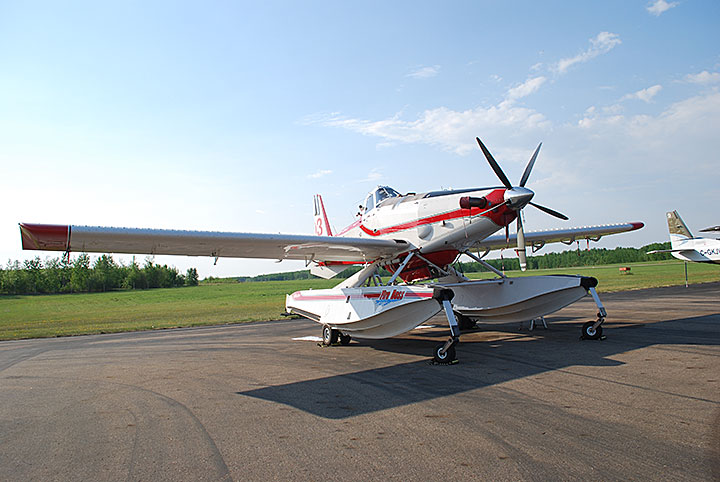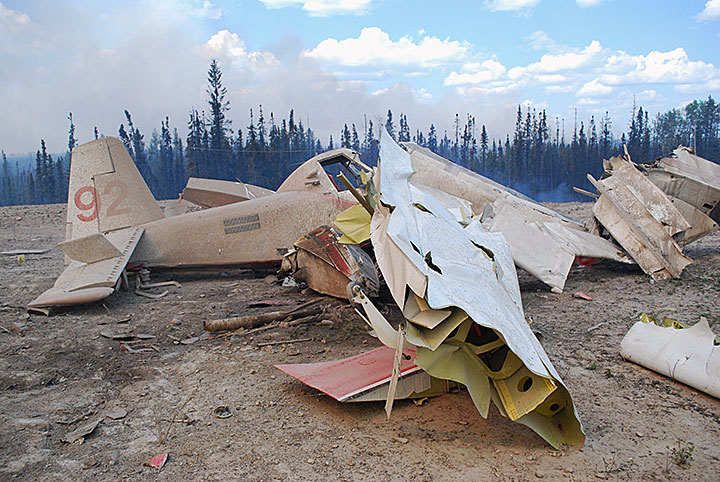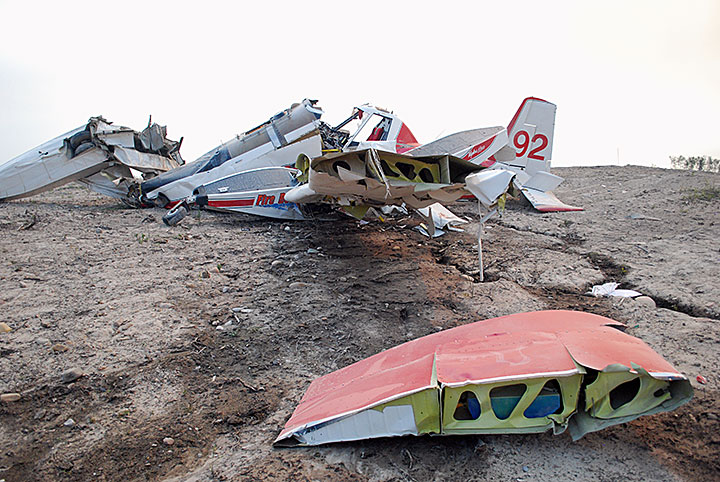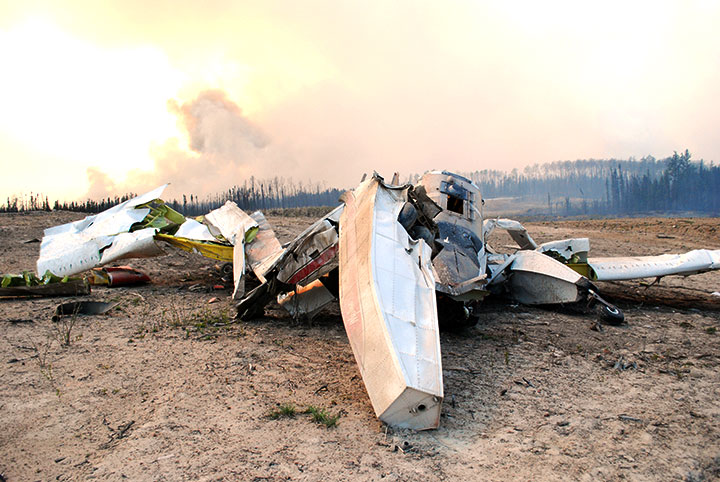Loss of control and collision with terrain
Conair Group Inc., dba Conair
Air Tractor AT-802A Fire Boss Amphibian, C-FDHV
Cold Lake, Alberta, 25 nm NW
The occurrence
The Conair amphibious float-equipped Air Tractor AT-802A Fire Boss, C-FDHV, serial number 802A-0348, was operating as Tanker 692 in support of wildfire management operations 25 nautical miles northwest of Cold Lake, Alberta. Tanker 692 was the last in a formation of 4 AT-802A Fire Boss aircraft followed by 2 CL-215T aircraft being operated by Conair Group Inc. Tanker 692 had completed 2 drops on the fire, from west to east, with a turnout to the north. When exiting its third drop, Tanker 692 encountered severe turbulence and then pitched to a nose-up attitude. The aircraft climbed to approximately 400–500 feet above ground level, where it rolled to the left and entered a nose-down attitude. It struck the ground right-wing low and close to nose-level at 1630 Mountain Daylight Time. The pilot was fatally injured as a result of non-survivable impact forces. There was no post-impact fire.
Media materials
News release
Fire whirl led to loss of control and impact with the ground in fatal May 2015 accident near Cold Lake, Alberta
Read the news release
Deployment notice
TSB will deploy a team of investigators to an aircraft accident near Cold Lake, Alberta
The Transportation Safety Board of Canada (TSB) will deploy a team of investigators tomorrow morning to the site of an aircraft accident near Cold Lake, Alberta. The TSB will gather information and assess the occurrence.
Investigation information
A15W0069
Loss of control and collision with terrain
Conair Group Inc., dba Conair
Air Tractor AT-802A Fire Boss Amphibian, C-FDHV
Cold Lake, Alberta, 25 nm NW
Download high-resolution photos from the TSB Flickr page.
Class of investigation
This is a class 3 investigation. These investigations analyze a small number of safety issues, and may result in recommendations. Class 3 investigations are generally completed within 450 days. For more information, see the Policy on Occurrence Classification.
TSB investigation process
There are 3 phases to a TSB investigation
- Field phase: a team of investigators examines the occurrence site and wreckage, interviews witnesses and collects pertinent information.
- Examination and analysis phase: the TSB reviews pertinent records, tests components of the wreckage in the lab, determines the sequence of events and identifies safety deficiencies. When safety deficiencies are suspected or confirmed, the TSB advises the appropriate authority without waiting until publication of the final report.
- Report phase: a confidential draft report is approved by the Board and sent to persons and corporations who are directly concerned by the report. They then have the opportunity to dispute or correct information they believe to be incorrect. The Board considers all representations before approving the final report, which is subsequently released to the public.
For more information, see our Investigation process page.
The TSB is an independent agency that investigates air, marine, pipeline, and rail transportation occurrences. Its sole aim is the advancement of transportation safety. It is not the function of the Board to assign fault or determine civil or criminal liability.
